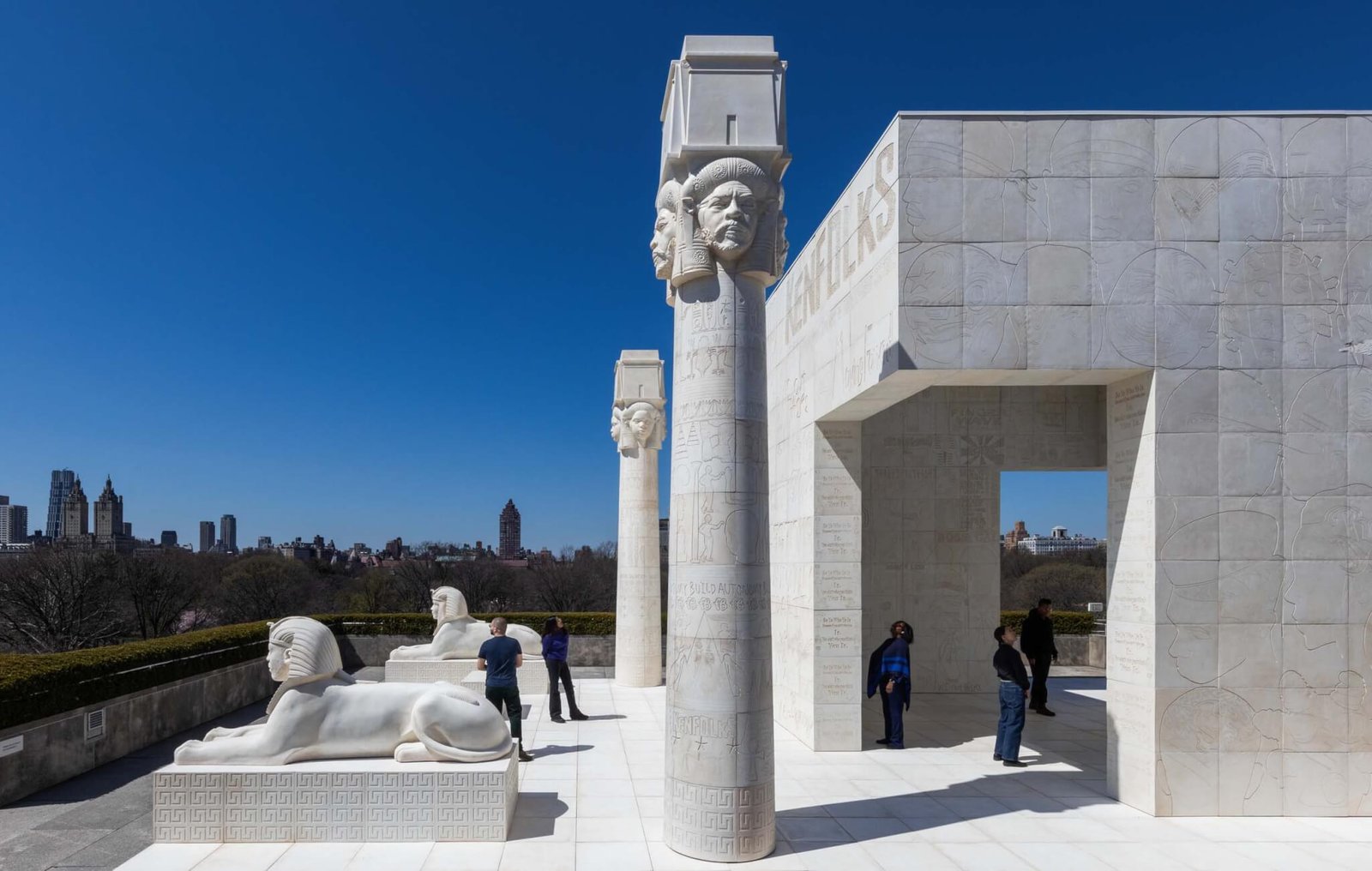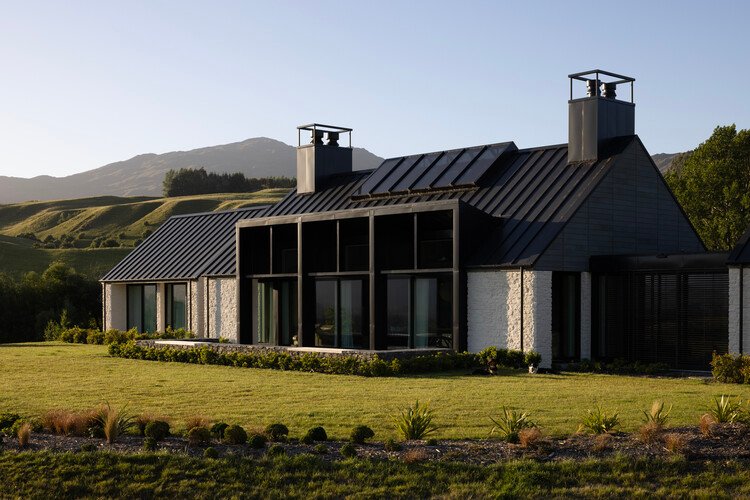Lauren Halsey’s rooftop pavilion at the Met melds Egyptian iconography with the visual culture of Los Angeles
Etched figures have joined the Central Park skyline. The tenth in a series of annual site-specific rooftop commissions at the Metropolitan Museum of Art, artist Lauren Halsey’s the eastside of south central los angeles hieroglyph prototype architecture (I) is a pavilion that melds Egyptian iconography with the lexicon of Halsey’s ancestral corner of L.A. Echoing the scale of the Met’s famed Temple of Dendur, hieroglyph prototype architecture (I)’s maximum height clocks in at just over 20 feet tall. The Museum description of it as a “large-scale architecture structure” is contextualized by the fact that most of the museum’s architectural artifacts are smaller fragments.
Hundreds of light tan, glass fiber reinforced concrete tiles clad the structure, their slight undulations in color suggesting wear and age. While Dendur’s large stones are inscribed with mythical reliefs of the gods and the Nile’s marshes, Halsey’s tiles bear the visual culture of the historically Black South Central Los Angeles neighborhood where Halsey’s family has lived for generations and where she was born and raised.
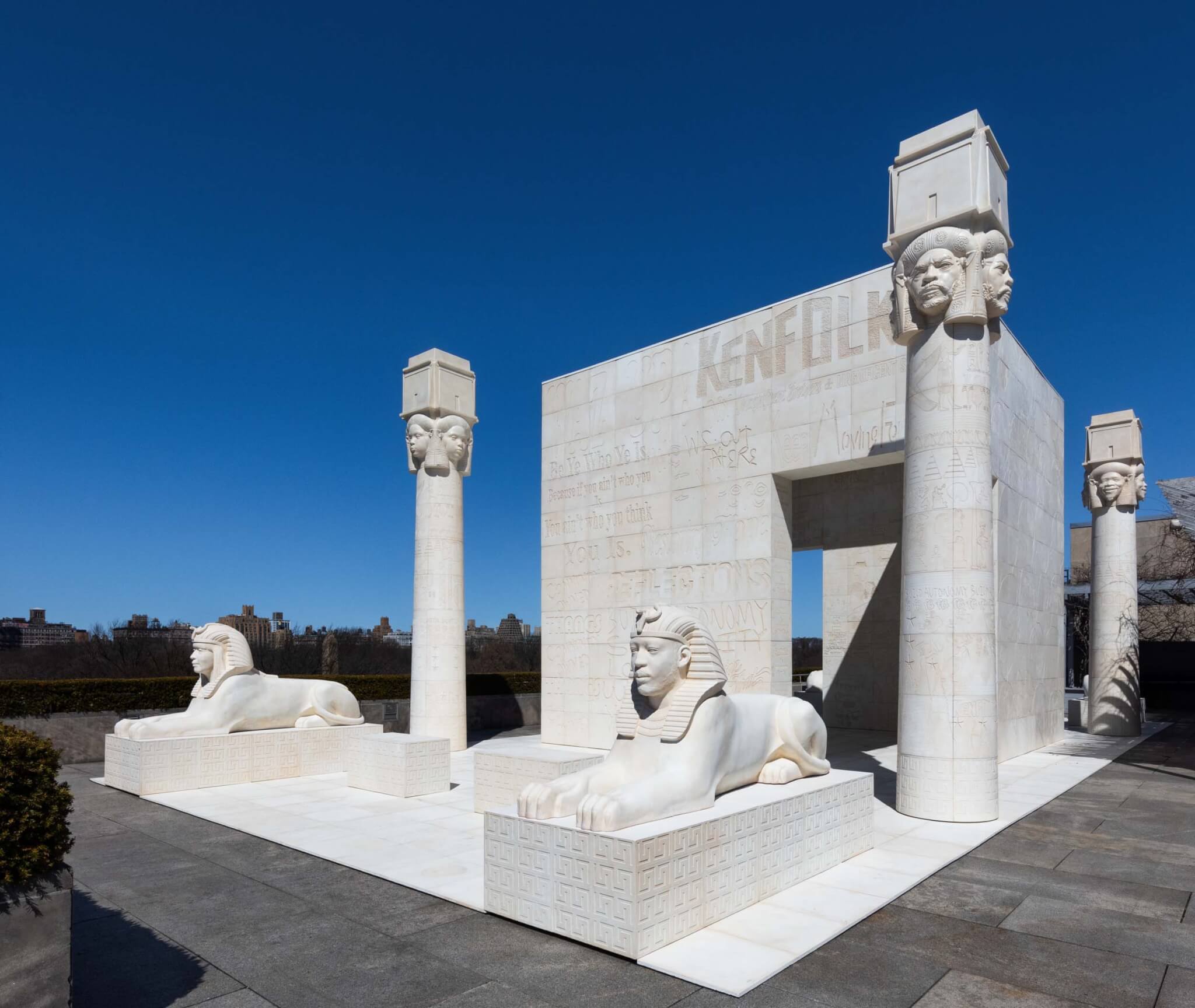
“My installation for The Met’s Roof Garden reflects my interest in conflating narratives from contemporary South Central Los Angeles with those evoked in ancient pharaonic architecture,” Halsey said in press materials. “My hope is that viewers in New York feel the connections intuitively.” Halsey studied architecture in community college and at California College of the Arts before earning her MFA at Yale in 2014.
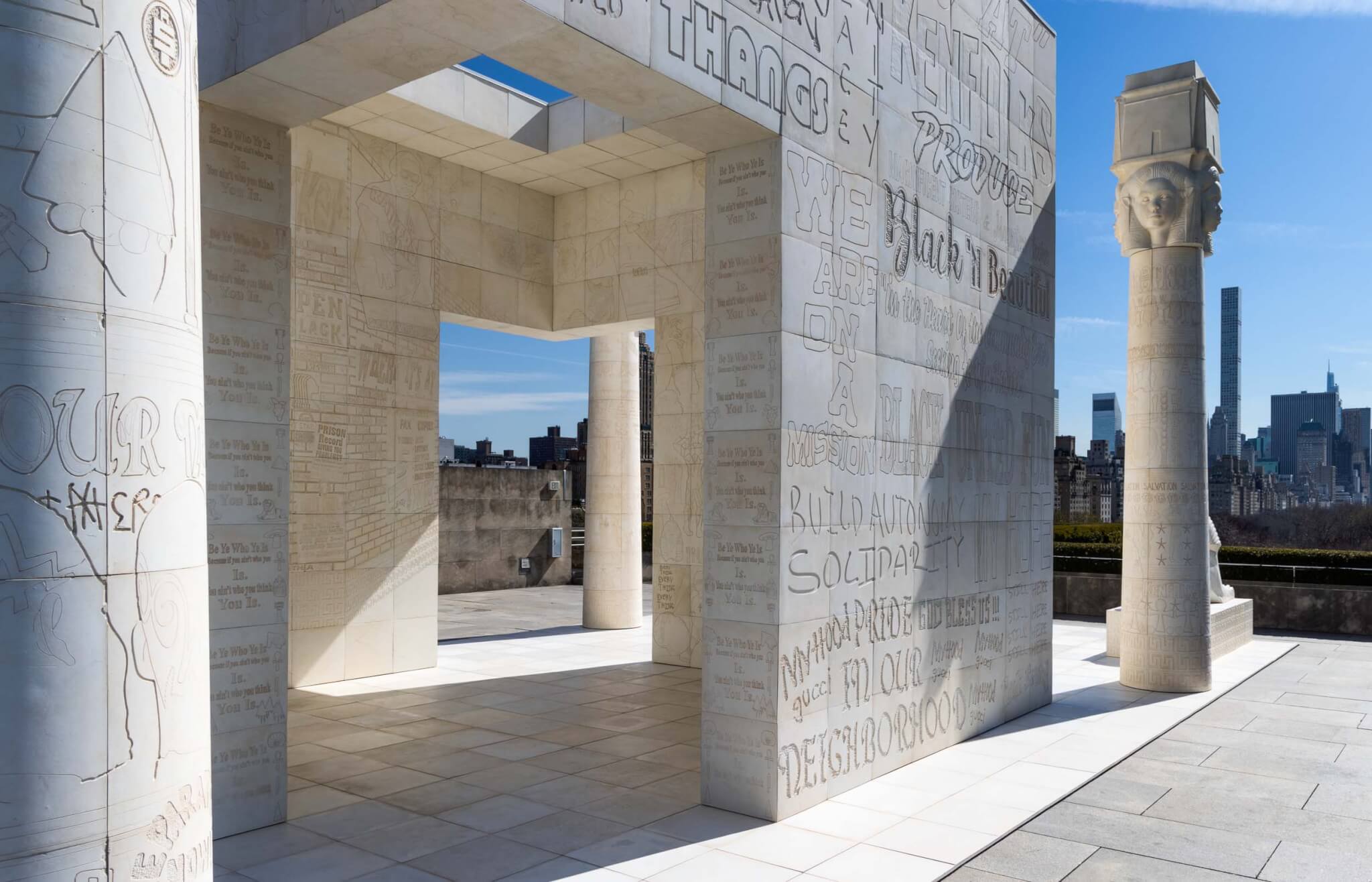
The densely concentrated words and images appear in similar groupings between walls, making it feel like passing familiar storefronts. Tags, signs, posters, murals, and graffiti are all legitimized as a living textual archive. Inscriptions read SONS OF WATTS COMMUNITY PATROL, BUILD AUTONOMY SOLIDARITY, Black ’N Beautiful. Reliefs of hairstyles and barbershop offerings show a chorus of possible beauty. The etched pavilion is flanked by ornamented columns and sphinxes with different faces, reminding visitors that this is a temple to many gods, if not many neighbors.
“Halsey’s commission redeploys the hieroglyph as a tool for documenting and commemorating how community vitality and genre-defying creativity shape the built environments of South Central Los Angeles,” according to the Met. Citing Afrofuturism and funk as inspirations, Halsey’s work develops a “radical and collaborative” visual culture.
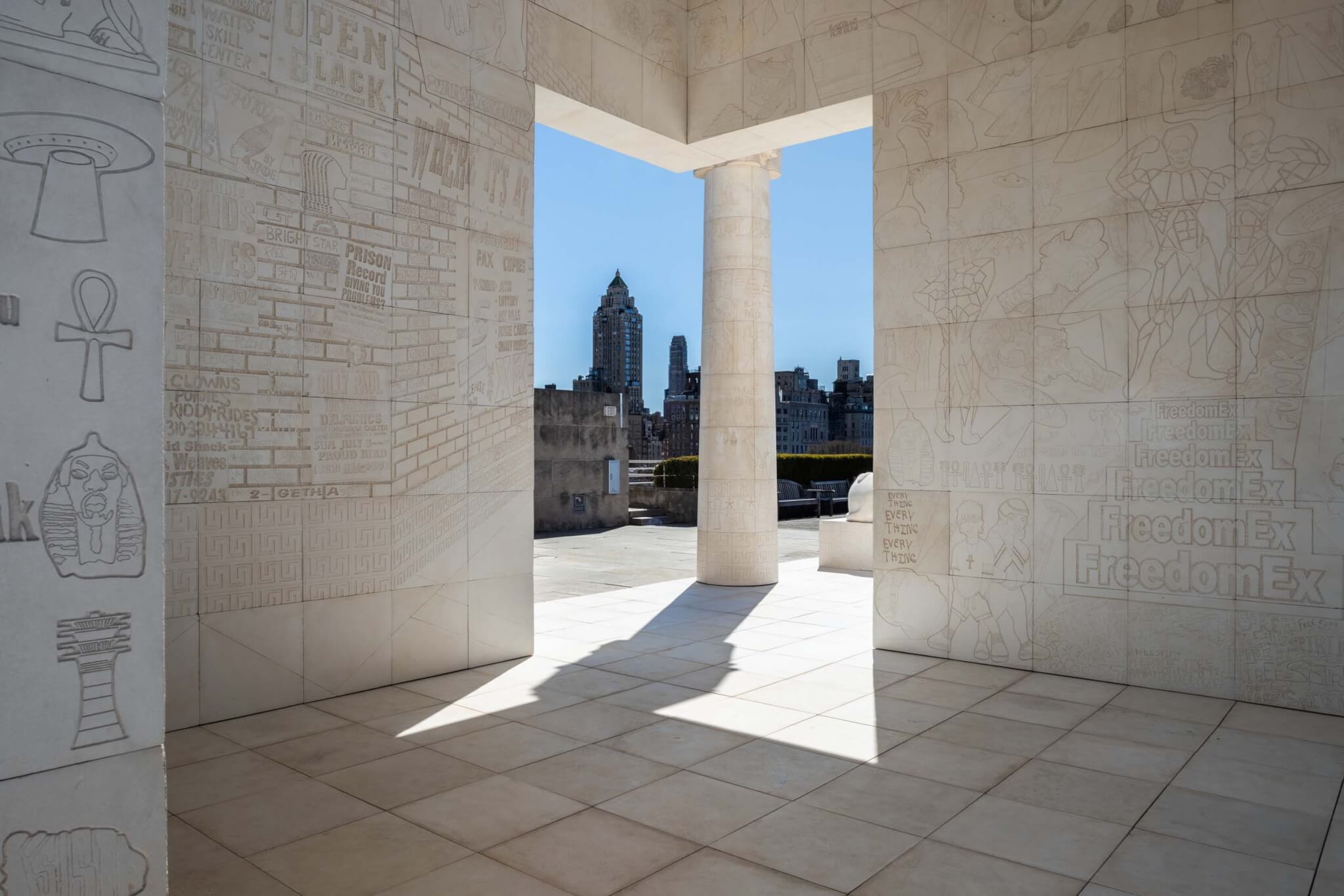
Collaboration happens between Halsey and the community’s archive of visual references, as well as between the visitors and archetypical architecture. Met director Max Hollein commented: “Engaging with the past, while also exploring a space of speculative imagination, Halsey offers us a powerful statement about civic space, social activism, and a reconsideration of the possibilities for architecture and community engagement.”
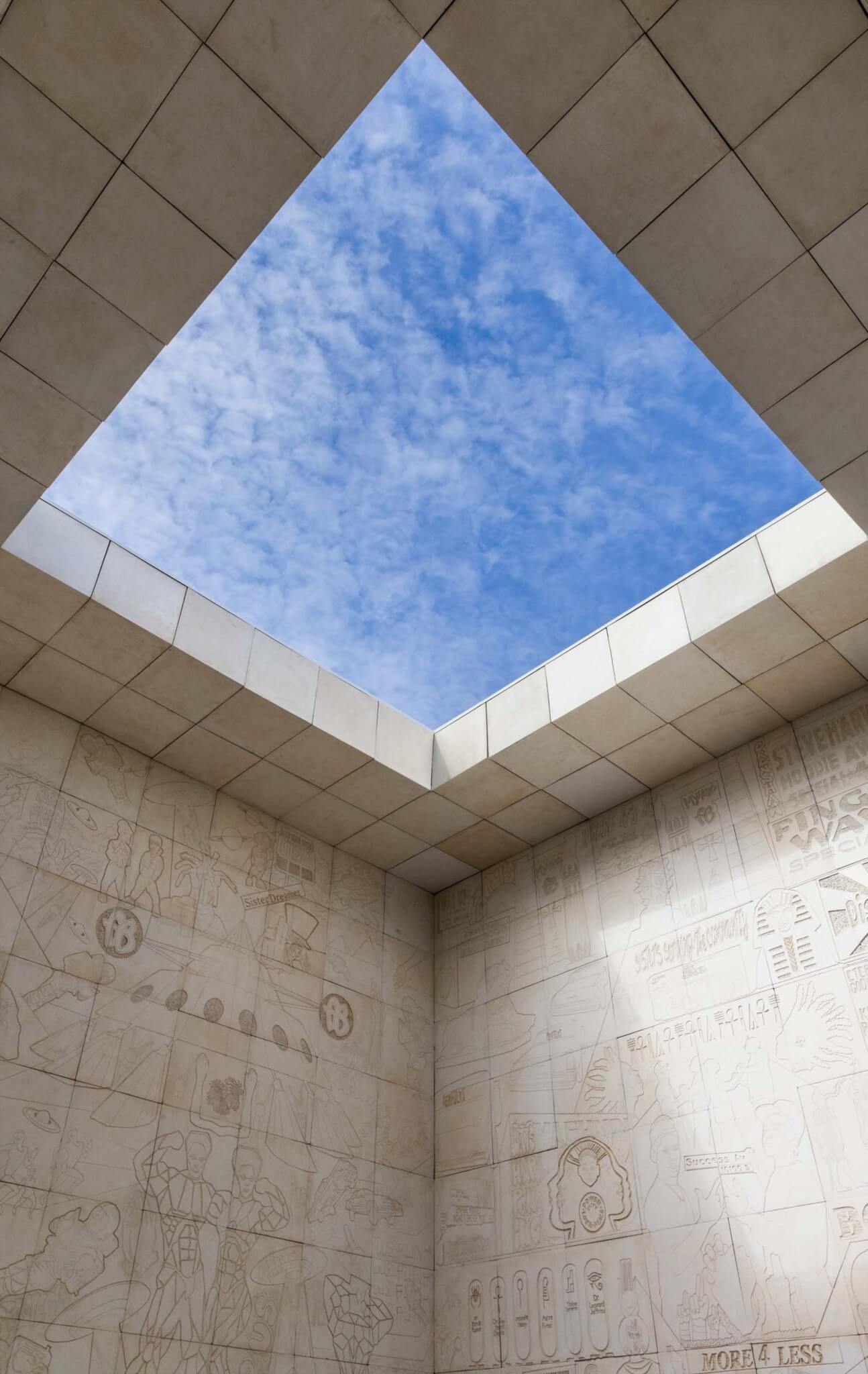
Emerging from the elevator, an initial perspective makes it appear comically larger than the green expanse of central park and distant skyscrapers. As a light breeze whipped around the columns, visitors read the Temple’s drawings and took pictures with the sphinxes. Sonically, the piece felt part of the park as the chatter and laughter of visitors carrying farther without traffic.
There are plenty of places to lounge and observe Lauren Halsey’s vision of L.A., on view now in New York through October 22.
Angie Door is a writer and designer who lives in Brooklyn.

